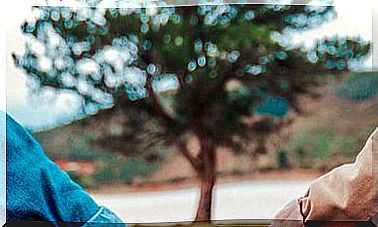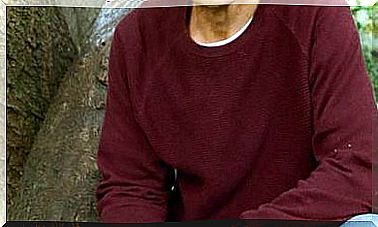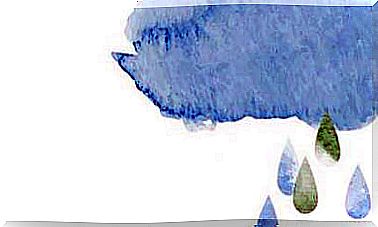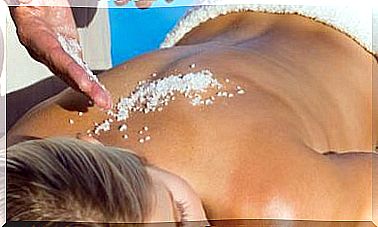Are Recycled Fabrics Healthy?
Plastic bottles are used to produce clothing, and rubber from damaged tires to make beach flip-flops. But are these recycled products healthy for the environment and people?

Recycling is something commendable, but not everything is recyclable nor should any material go through this procedure. Nor is it the unequivocal solution to resolve that, in the last four decades, more waste has been generated than since the origin of man until 1970.
There are goods whose value, after being recycled, is “lower” (“downcicling”) than its previous life. This is the case of clothing that is chopped up to fill the bodies of cars or sofas. On the contrary, there are others whose final value is “higher” (“upcycling”), such as PET plastic waste reconverted into polyester fibers for textiles, garments, upholstery …, or reused tires for accessories.
Too much synthetic clothing
In fabrics there is an increasing proportion of acrylics and synthetics, around 67%. A single polyester jacket (polyethylene terephthalate, like PET in bottles) releases a million plastic microparticles in each wash.
This is also the case in upcycling products, where the PET in the bottle is converted into tissue. Many fabrics and materials also carry chemical additives from their production or finishing processes. If they are not removed during recycling, or if others are incorporated during their transformation, they can end up released into the air (by themselves, by friction, by erosion …) or on our skin.
Therefore, chemical optimization or neutralization processes are needed that eliminate (or neutralize) potentially harmful substances.
Fashion is very polluting
As the environmental doctor Pilar Muñoz-Calero warns, fashion is a very polluting industry. And he adds: “It is one of the ones that uses the most chemical products. Not only for synthetic clothing:” fast fashion “constantly offers new trends at the lowest possible price without taking into account the human and environmental cost”.
Textile fibers carry more and more chemicals and are in practically all brands. Their presence increases in outdoor clothing (for cold, rain …), as they are used to confer insulating, fire-retardant, stain-repellent properties …
What toxins are found in clothes?
Some of the most common chemical additives are:
- Ethoxylated alkylphenols (EPAs): toxic, persistent, bioaccumulative and endocrine disruptors.
- Phthalates: plastic softeners, such as DEHP and BBP, toxic to the reproductive system and “extremely worrying” in the EU REACH regulation.
- Brominated flame retardants (BFR): they are endocrine disruptors.
- Perfluorinated and polyfluorinated (PFC): anti-stain, anti-grease and isolate from water or cold, but they are also endocrine disruptors, and many, persistent and bioaccumulative (in the liver).
- Chlorobenzenes: intermediate solvents that damage the liver, thyroid and central nervous system. Bioaccumulatives and endocrine disruptors.
- Chlorinated solvents: also intermediates, they are highly toxic.
- Short-chain chlorinated paraffins: finishing and flame retardant agents.
- Heavy metals: chromium VI, cadmium, mercury and lead, in dyes and pigments, very toxic and difficult to eliminate from the body.
- Antimony: a catalyst, carcinogenic in certain concentrations.
What about children’s clothes
A scientific study on children’s socks carried out in Spain by the team of Professor Nicolás Olea (author of Liberate de Toxicos , RBA 2019) detected, for example, bisphenol A in 90.6% of them, from concentrations below 0.70 ng / g to 3,736 ng / g.
And also parabens, such as ethylparaben, present in all the samples analyzed; methylparaben, in 81%, and propylparaben, in 43.7%.
They pierce the skin. According to the study, due to direct contact with the skin, there is dermal exposure to these substances (with estrogenic and antiandrogenic activity) in 83.3% of the socks analyzed.
Toxic substances remain in recycled materials
Recycled products contain chemicals from the old good, says Dr. Muñoz-Calero. If the original material was a conventional cotton, there may be traces of pesticides or substances used in its production (dyes, finishes …), as happens with polyester.
The problem is that, in general, the materials are not analyzed so that what is obtained in the end is better and less toxic than the original (that would be a true upcycling), explains Gema Gómez, from the Slow Fashion Next platform.
This requires innovation and technology. The Textile Exchange organization points out that the quality of these products should not be compromised by contamination with additives – antioxidants, pigments, stabilizers or antiblocking agents – or by the shortening of the polymer chain during depolymerization.
He also calls for substitutes for antimony, a cancer-causing catalyst in polyester that can remain in clothing.
True upcycling
It would be vital that any upcycling textile goes through a process that eliminates chemicals that are potentially dangerous for human and environmental health, considers Giusy Bettoni, founder of CLASS (a pioneering showroom in selling sustainable fabrics to the industry, based in Milan).
For this reason, Bettoni asks companies of spinning and recycled fabrics to analyze the life cycle, chemicals and the impact of their production with ten criteria (calculation of water, energy, CO2 …). “The responsibility is not only to recycle, but to respect the consumer.
Your health is part of that, especially when it comes to transforming post- consumer materials. “ But only 10% of upcycling fashion brands use these optimization or chemical neutralization processes, most from Japan and the US.
No traces of PET
“In the case of PET bottles – explains Ignasi Cubiñá, expert in cradle to cradle – it is about replacing the original catalyst, of which traces remain in the product, with a safer one in a chemical recycling process of depolymerization and repolymerization. Another option is to use clean original PET “, he points out.
Fortunately, the optimization or chemical neutralization processes are spreading, Bettoni believes: “But it is key to continue pressing at the industrial level, and regarding how it is communicated to the consumer, because they need to know it and sometimes it is not easy. Recycling is not enough , the important thing is how you do it and how you communicate it to the user. That is the real challenge today, “he emphasizes.
Before buying, take a good look
Do not confuse upcycling with ecological: a product made with recycled materials does not imply that it is free of previous harmful substances. New raw materials are not usually manufactured for it, but it is based on pre-manufactured substances. Therefore, it is advisable to:
- Ask questions, find out and explore before buying, to choose with confidence, compare, answer questions …
- Opt for ecological natural fabrics, the most likely to be healthy for us and for the environment.
- Decide on recycled upcycling items from brands whose labeling contains a certification on toxic substances that ensures their safety for human use, their sustainability and socially responsible production, such as: Oeko-Tex Made in Green: the fabric has passed a toxic control and It has been produced in a responsible way and GOTS (Global Organic Textile Standard): the best known for organic fibers.
- Reject recycled products without sufficient information, even if we like them or say they are sustainable.
- Acquire little and well, as it is better to have few good garments without toxic substances, than many precarious ones with undesirable substances.








